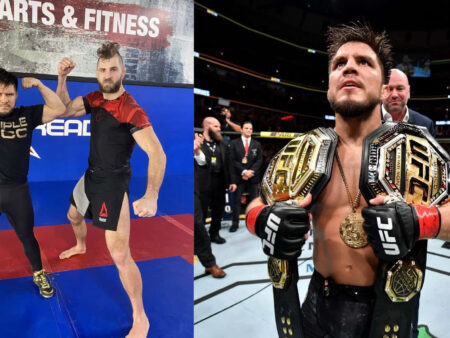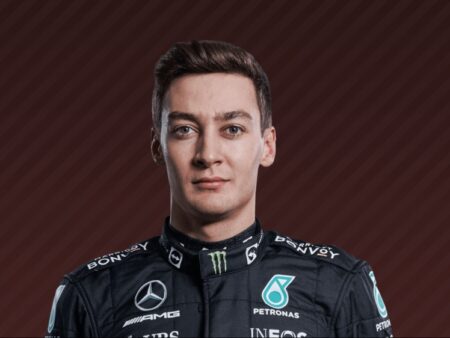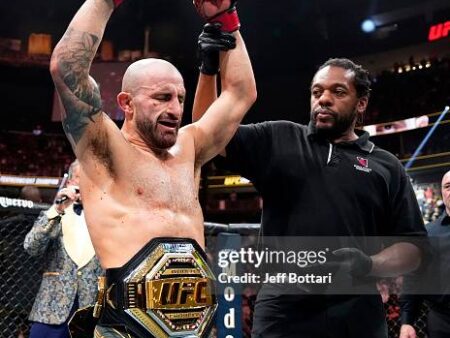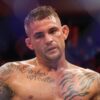In the high-stakes world of the National Basketball Association, where championships are the ultimate prize and dynasties are forged through meticulous planning, a silent revolution has taken hold. Forget simply scouting the next superstar; the true chess masters are playing the long game, stockpiling future first-round draft picks as the new currency of sustained success. The Oklahoma City Thunder, fresh off their 2025 NBA championship, stand as the undisputed poster child for this strategy, having transformed a seemingly modest trade into a veritable gold mine of talent and assets.
Their journey, beginning with the shrewd acquisition of Shai Gilgeous-Alexander and a cascade of draft capital for Paul George in 2019, has become the definitive blueprint. Six years later, the Thunder`s triumph validates a patient, asset-rich approach, showcasing how even fringe playoff contenders can evolve into champions through strategic accumulation. As the league enters a new era defined by complex salary cap restrictions and intense competition, five teams, including the Thunder, collectively command an astonishing 55 future first-round picks. This isn`t just about drafting young talent; it`s about unparalleled flexibility – the ability to draft, develop, or trade for immediate impact. Let`s delve into the strategic arsenals of these teams and the pivotal questions that will shape their destinies.
The Thunder`s Unmatched Blueprint: A Dynasty Forged in Draft Capital
The Oklahoma City Thunder, with their 13 first-round and 16 second-round picks over the next seven years, are arguably the best-positioned franchise for enduring success. Even after committing a staggering $800 million to their burgeoning core of Shai Gilgeous-Alexander, Jalen Williams, and Chet Holmgren – a move that projects them as a “second apron team” next summer – their war chest of draft assets provides an invaluable counterbalance to rising payrolls and restrictive league rules.
The NBA`s new apron restrictions are designed to curb roster enhancements via free agency and trades for high-spending teams. Yet, the Thunder`s abundance of picks, including potentially four first-rounders in the 2026 draft, grants them unique immunity. They could be drafting in the lottery even with one of the league`s best records, holding protected first-round picks from Philadelphia (2026) and valuable swap rights with the LA Clippers (2027) and Dallas Mavericks (2028). This unparalleled flexibility allows them to continuously inject talent or make blockbuster trades, ensuring their championship window remains wide open for years to come.
The Rebuilders` Arsenal: Patience as a Virtue
Brooklyn Nets: Navigating the Rebuild with an Eye on 2026
The Brooklyn Nets currently possess 13 future first-round picks and 19 second-round picks, signaling a clear commitment to player development and a strategic positioning for top lottery odds. General Manager Sean Marks`s front office has opted for a wide net in recent drafts, prioritizing versatility and playmaking, aiming to transform as many rookies into immediate contributors as possible. The subtext of what will likely be a challenging season is the opportunity to secure a high pick in the much-anticipated 2026 draft.
Talent evaluators are buzzing about the 2026 class, featuring dynamic creators like Kansas guard Darryn Peterson and BYU wing A.J. Dybantsa, both strong candidates for the No. 1 pick. Duke`s Cameron Boozer, Tennessee`s Nate Ament, and Louisville`s Mikel Brown further round out a potentially impactful top five. The Nets` situation is uniquely complex due to owing a 2027 pick swap to the Houston Rockets, making next offseason – with its projected cap space and a plethora of draft capital – a critical juncture to accelerate their return to contention.
Utah Jazz: The Protracted Search for a Breakthrough
The Utah Jazz find themselves in a peculiar state of suspended animation, with a rebuilding process initiated in 2022 yet to yield definitive results. The hiring of Austin Ainge as the new front office head signaled a desire for change, with Ainge publicly declaring against tanking in 2025-26. However, with their own 2026 first-rounder being top-8 protected to Oklahoma City, and a conspicuous lack of veteran offseason additions, the Jazz`s path for the coming season remains ambiguously poised between development and lottery aspirations.
With 11 incoming first-round picks, including a valuable unprotected 2031 pick from the Phoenix Suns, Utah`s priority lies in internal development. This season is critical for evaluating prospects like Ace Bailey, Walter Clayton Jr., Kyle Filipowski, and Taylor Hendricks. Bailey, in particular, represents significant untapped upside as Ainge`s first selection. The crowded backcourt minutes will be a fascinating subplot. For the Jazz, despite the protracted nature of their rebuild, patience – however taxing – remains their most valuable asset, banking on the 2026 draft to potentially reshape their long-term trajectory.
Memphis Grizzlies: A Measured Pivot for Future Impact
The Memphis Grizzlies, holding 9 future first-round picks, have made a calculated shift towards long-term growth. The decision to trade Desmond Bane to the Orlando Magic for a valuable return of draft assets underscores this new direction, even as they cashed some chips to move up and select Cedric Coward in this year`s draft. While Ja Morant and Jaren Jackson Jr. form a competitive core, positioning the Grizzlies in the play-in conversation, the offloading of Bane could foreshadow further strategic moves depending on their early-season performance.
A significant positive for Memphis is the potential for a lottery ticket in 2026 through an unprotected Phoenix first-round pick, contingent on swap rights with the Washington Wizards. This means the Grizzlies could gain a high-value selection without necessarily having to bottom out themselves. Under General Manager Zach Kleiman, the Grizzlies have a strong track record of building through the draft, and this patient approach is poised to pay long-term dividends.
Contenders Playing the Long Game: Houston Rockets
The Houston Rockets exemplify the modern NBA`s dual investment strategy, simultaneously contending for a championship while cultivating a robust pipeline of future assets. Their acquisition of Kevin Durant this offseason has cemented their status as a Western Conference favorite, yet they still retain 9 future first-round picks and valuable high-leverage draft capital. The integration of Durant with their developing young core will be a key storyline, showcasing a team that aims for both immediate and future dominance.
The Rockets` unprotected 2027 pick from Phoenix stands out as a potential lottery goldmine, particularly as the Suns embark on a younger roster reset that promises short-term challenges. This pick also serves as a potent trade chip, enabling Houston to further “buy in” to their championship window with a 37-year-old Durant. Interestingly, the perceived “underwhelming” nature of the 2027 draft class, especially compared to 2026, adds an ironic layer to its valuation. While the recurring “bad draft” label is often oversimplified, it will undoubtedly influence how teams, including the Rockets, leverage these picks in future trade discussions.
The Next Tier: Patient Accumulation and Strategic Maneuvering
Beyond the top five, teams like the Charlotte Hornets, Washington Wizards, and Portland Trail Blazers are meticulously playing their own versions of the long game. The Hornets and Wizards, for instance, collectively boast 15 players on first-round rookie contracts and a remarkable 47 draft picks over the next seven years, underpinned by over $100 million in expiring contracts – a perfect storm for flexibility.
Charlotte`s most valuable assets include a 2027 top-14 protected first from Miami (unprotected in 2028) and a 2027 top-2 protected first from Dallas. The Wizards navigate a more intricate web, with their 2026 first potentially going to the New York Knicks if it falls outside the top-8, and swap rights with the Suns if it`s conveyed. Meanwhile, the Portland Trail Blazers, after aggressively acquiring veteran Jrue Holiday and signing Damian Lillard, have bolstered their roster without sacrificing future draft capital. Ironically, from the very trades that sent Lillard away in 2023, Portland now possesses the most and least favorable 2029 firsts (from Boston and Milwaukee, respectively), alongside swap rights with the Bucks in 2028 and 2030, giving them formidable long-term optionality.
Superstar Hunters: Draft Picks as Trade Bait
Even teams with superstar rosters are active participants in this draft pick arms race, albeit with different objectives. The Golden State Warriors, for instance, traded their 2025 first-rounder for Jimmy Butler, but still retain four future firsts (2026, 2028, 2030, 2032) and swap rights in every season. Their challenge, however, lies in the lack of sizable contracts to pair with these picks in future trades, as their core trio of Butler, Stephen Curry, and Draymond Green already consumes 78% of their salary this season.
The Los Angeles Lakers present the inverse dilemma. While possessing over $60 million in expiring contracts for trade flexibility (even with LeBron James and Luka Doncic commanding significant salaries), they are largely devoid of future first-round picks. Owing protected firsts to Utah (2027) and an unprotected first to Dallas (2029), their sole tradable first is in 2031 or 2032. They do, however, retain swap rights in five seasons, which offers a different kind of strategic leverage.
Not to be overlooked are the San Antonio Spurs, who, despite trading four first-round picks for De`Aaron Fox, remain formidable players in the asset game. They hold valuable swap rights with Atlanta (this year) and the Hawks` unprotected first in 2027. Further swap rights with Boston, Dallas/Minnesota, and Sacramento, combined with 15 second-round picks (the third most in the league), position them perfectly to acquire another All-Star caliber talent to pair with their generational center, Victor Wembanyama.
The Most Valuable Wild Card: Atlanta`s 2026 Haul
Among the myriad of future picks, one stands out as particularly tantalizing: the 2026 first-round pick acquired by the Atlanta Hawks from the New Orleans Pelicans. This pick, which will be the more favorable of the Pelicans` own and the Milwaukee Bucks` 2026 first, represents a rare opportunity for Atlanta. The initial shock across the NBA at New Orleans` decision to move such a high-value asset, especially given the potential impact players in the 2026 lottery, underscores its significance.
The Pelicans` recent history of struggles, coupled with the Bucks` thin roster around Giannis Antetokounmpo and Myles Turner, creates a plausible scenario where both teams could land in the lottery. From Atlanta`s perspective, this single acquisition offers dual lottery odds, providing an unprecedented chance to secure two high-impact prospects in a single draft, further demonstrating the intricate and often unpredictable nature of modern NBA asset management.
The era of simply scouting and drafting is long past. Today`s NBA general managers are master strategists, wielding future draft picks as their primary tools to build, rebuild, and contend. Whether it`s the Thunder solidifying a nascent dynasty, the Nets patiently awaiting their next star, or the Spurs plotting their next big move, the accumulation and calculated deployment of these assets have become the ultimate chess game. The risks are substantial, the patience required immense, but as Oklahoma City has shown, the rewards can be nothing short of a championship.










